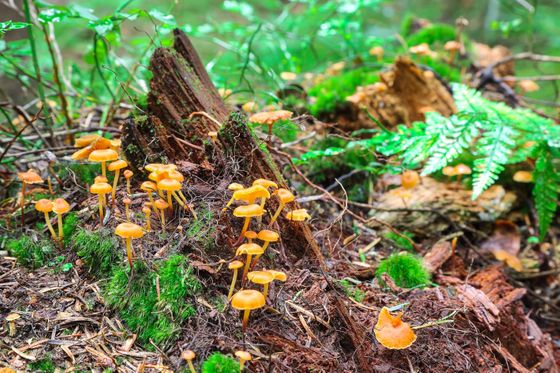World's first distribution map of fungi and bacteria is created

By
There are large forests on earth, and millions of fungi and bacteria are active in the forests. For the study of forest ecosystems that lead to climate change such as global warming, a 'world distribution map' of organisms that coexist with trees was created.
Climatic controls of decomposition drive the global biography of forest-tree symbioses | Nature
https://www.nature.com/articles/s41586-019-1128-0
'Wood wide web'—the underground network of microbes that connects trees—mapped for first time | Science | AAAS
https://www.sciencemag.org/news/2019/05/wood-wide-web-underground-network-microbes-connects-trees-mapped-first-time
“There are 3 trillion trees in the world,” announced by Thomas Klauser, an environmental ecologist at the Zurich Institute of Technology in Switzerland and an adviser to the “ 1 trillion tree planting campaign ” of the United Nations Global Afforestation Promotion Activity. The paper was the starting point of the research on the “World Distribution of Forest Symbiosis” conducted this time. In this paper, in order to find out the number of trees present in the world, the distribution map of trees in the world was created based on the huge amount of data obtained from all over the world.
You can read Thomas Krowser's research in detail in the following articles.
Research shows that planting trees in vacant land around the world will absorb more carbon emitted by humans each year-GIGAZINE

Based on Crowser's research, the biologist of Stanford University, California, based on his research, will devise creating a 'World-wide distribution map of forest symbiosis' that has landed on plant roots and surfaces. The distribution map of trees is important because the kind of 'mycorrhizal fungus that is easy to attach' changes depending on the kind of trees.
Mycorrhizal fungi affect the nutrients that trees absorb, which in turn affects the amount of carbon dioxide in the atmosphere, climate change, and so on. Therefore, understanding the distribution of mycorrhizal fungi leads not only to forest ecosystems, but also to thinking about the global climate.

By
Mr. Peis directly sent Mr. Crowser's idea of 'World distribution map of forest symbiosis' by e-mail, and a research group including Mr. Crowser and Mr. Pei was established. In the research, information on the type of trees and fungi that coexist with the trees and environmental data such as temperature, rainfall, nutrients contained in the soil, and topography are input in a certain place, and the information on fungi is divided between other data We have created a computer algorithm that finds the correlations that exist in. In the generated algorithm, when environmental data such as temperature and the distribution of trees were input, it was possible to predict the fungi that inhabit the place.
According to the results derived from the algorithm, it was found that ectomycorrhizal fungi coexist with about 80% of trees in forests in warm regions such as Europe and the United States. In contrast, in the tropics, 90% of all trees were found to be related to the fungi that make up the arbuscular mycorrhiza . In addition, it is said that this result was supported by field work.

By Pilat666
Earth system scientist Charlie Coben, a member of the Lawrence Berkeley National Laboratory in California, praises the global distribution of mycorrhizal fungi, but it is difficult to measure the loss of nutrients and expectations from soil So, I point out that this world distribution map may not be accurate.
On the other hand, Crowsar predicts that as the earth warms up, 10% of trees with ectomycorrhiza will be replaced by trees with arbuscular mycorrhiza. In trees with arbuscular mycorrhizal roots, carbon dioxide emissions are high, and global warming is likely to accelerate.
The research information such as the global distribution map created this time will be sent in about two weeks when the request is sent directly to the Global Forest Biodiversity Initiative (GFBI).
Related Posts:






